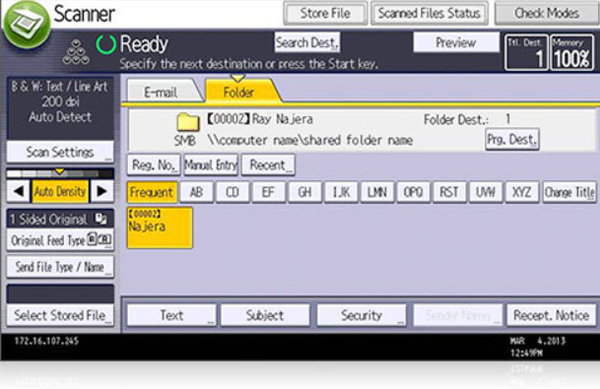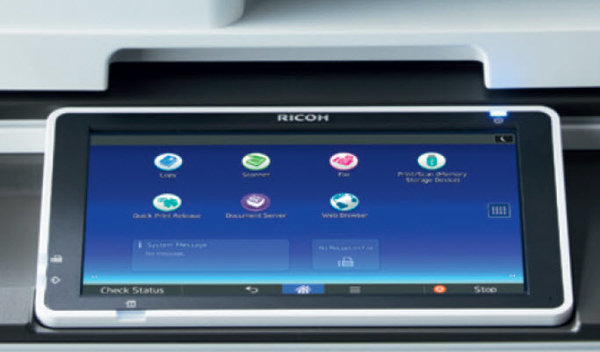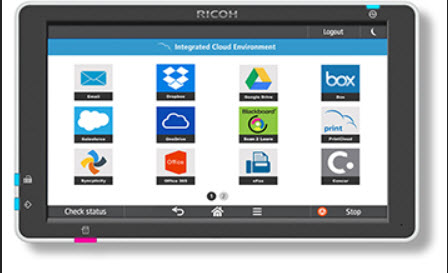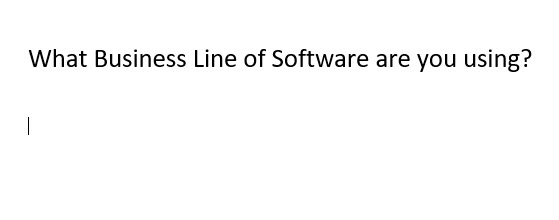8:30 a.m. in Germany is 2:30 a.m. in my native east coast U.S. time zone. I was jet lagged from the previous day’s flight. It was already hot, and there was no air conditioning in the conference room of the hotel in Bad Wörishofen. Coffee. Europe has the best coffee.
My discomfort alleviated, I still did not expect that this day in July of 2016 would have such a profound impact on DocuWare and the way we operate. This was the first day of a workshop that introduced our senior management team to a new strategic planning and implementation process called Hoshin Kanri.
“Strategic planning,” “implementation process,” “Hoshin Kanri” – we’re getting into dangerous waters. This business jargon tends to cause eyes to roll … but stick with me because what I am talking about is how we were able to better organize our energy and effort to achieve significant business results. In short, how we’re able to put a strategic vision into action.
Hoshin Kanri, also known as policy deployment, is a methodology that enabled us to achieve breakthrough goals by ensuring a laser focus and precise alignment throughout the organization. I would like to take you through the Hoshin Kanri methodology, and along the way, I’m happy to share a story or two about my experiences.
The Hoshin Kanri 7-step Process
Establish Vision vs. Current State
In this phase an organization determines their true goals. What is it they want to achieve at the most distilled level? This critical step sets the direction of the compass needle and determines where you want to travel. In this phase a company may do things like review its mission statement, its processes, and its current key performance indicators (KPIs). The organization openly discusses what they are doing to move in the right direction and what is not working.
This is difficult. If you have ever sat on a committee that is responsible for writing or rewriting a company’s mission statement you might already have experienced the challenge that comes with defining company direction: its main goals, values and vision.
Develop Breakthrough Objectives
Breakthrough objectives aren’t like other goals your organization has probably set in the past. They are “breakthrough” in the sense that they are goals that might seem impossible to achieve at first glance.
These types of goals force your organization to do new things such as introducing new products, entering new markets or transforming your service delivery model. These are the goals that are going to force change within your organization, and that won’t happen overnight. These goals have a three- to five-year time horizon.
I won’t share DocuWare’s breakthrough goals as they are proprietary to our business, but I can share the categories they address. We have three targets:
1. Sales excellence
2. Excitement working with our solutions
3. Excitement interacting with our companyIt was at this phase of the planning that the management team started to feel aligned – our departments all had a direct role to play in reaching one or more of these goals.
Develop Annual Objectives
Breakthrough objectives are huge and meeting them doesn’t happen all at once. In this phase you develop one-year goals that will get you moving towards your breakthrough objective, “This is what needs to happen next year for us to reach that goal in five years.”
This was an exciting step for us. We started thinking about what we really needed to do in the next year. Under each of our three targets we developed one or two initiatives, all of which were focused on revamping our processes.
Throughout the organization, we found that if we only optimized processes we had in place, we could only achieve incremental change (maybe a 5-10% improvement by changing a small thing here or there). We couldn’t keep doing things the same way and expect a significantly different result.
We ended up identifying five major processes within DocuWare that we wanted to transform and called it “xxxx process Version 2.0.” We developed a vision of what these processes would achieve and gained a shared understanding of what our expected result would be. This was our first year’s annual objective
Deploy Annual Objectives
If you’re noticing a trend where each previous step starts to cascade down to the next for a more specific refinement, then you start to see how the Hoshin Kanri methodology works. It takes a big vision and breaks it down into actionable steps.
In this phase, you establish concrete steps for what your organization will really start to do. Here you plan specific, measurable goals that are assigned to initiative owners and supporters within the leadership group of your organization.
Under the umbrella of “Excitement working with our solutions” DocuWare determined that there were two driving variables that went into “Exciting Work” equation – 1) things that our users found exciting and delightful, and 2) things that detracted from that excitement.
We started to think in different terms. We already had excellent metrics around bug numbers, support case volume, and satisfaction with our help desk … but what if we started thinking about the fact that every time a user interacts with an expert from our company that we aren’t living up to our mission, and that it could be taking away from their overall excitement of our solutions? Of course, we want to continue to be there to delight our customers with excellent service when they need it, but we also really needed to focus on empowering our users to manage their digital transformation without an expert. From this we decided the number of support cases each customer opened with DocuWare through their life cycle was a powerful metric to monitor. I asked my teams to find specific trends that pointed to where we could proactively empower customers before they had a need to contact us. This work became the basis for my team’s first year annual objectives.Execute Annual Objectives (aka Just Do It!)
Through steps 1-4, an organization aligns strategic vision with a clear roadmap to achieve that vision.
In Step 5 you simply do it. I say “simply” but obviously doing the work is a big challenge, and no one approach is the “right” way for every organization. Many organizations implement well-known approaches like Six Sigma DMAIC, Kaizen Events, Plan-Do-Study-Adjust cycles, or A3s.
A mentor of mine once said “the product of strategic planning is the planner, not the plan.” I think there is a lot of truth in that statement, but I also think he never went through a Hoshin Kanri planning. We had planners AND a plan.
To implement our plans, we used an A3/PDCA approach. DocuWare’s leadership team created action plans and milestones. We created a lot of new processes to ensure collaborative and transparent teams across divisions. Throughout the first year with a little trial and error, we found our way quickly.
High visibility KPIs are a key part of our Hoshin Kanri initiative. The methodology provides many tools which make closely tracking KPIs possible. They’ve got great names, like the “Bowler” (it looks like a score card you keep at the bowling alley) and the “X-Matrix” (which is not another awesome movie with Keanu Reeves). We ended up having a lot of action plans going on at DocuWare. The great thing was that even though we all are working on different plans, they all are synchronized, pointing each department in the same direction.Monthly Review
One of the pitfalls organizations face when creating a yearly plan is that it sounds great at the beginning of the year but as the daily work never seems to end, the plan gets delayed, stalled, or even forgotten. To bring about a great change requires a lot of dedication, and most importantly a lot of effort. In fact, most advice on Hoshin Kanri will tell you that a minimum of 60% of a leader’s time should be focused on achieving an annual goal.
The only way to ensure that is to review the progress often, and while action teams should meet at a minimum every week, the leadership round must meet at least once a month to review the status of all Hoshin Kanri projects.
Hoshin Kanri truly transformed DocuWare’s senior leadership monthly meeting. Every initiative owner is responsible for giving a status update on his/her project and a discussion about the KPIs happens as an entire management team, not limited to subgroups or divisions. The phrase “red is the new green” became a motto, because unachieved KPIs (marked in red by our tools) are not look at as failures or non-achievements but simply as an opportunity to further push us to change more in our organization, to break even further from our status quo and find new and innovative ways to bring change. Fast change.
- Annual Review
Hoshin Kanri is a cycle of work that brings an organization toward an extremely ambitious goal.
Of course, along the way adjustments will need to be made, minor course corrections here and there. An annual review is an extremely important step. It’s an opportunity to look at what happened over the last 12 months and figure out what needs to be done in the next 12. Next year’s goals and action plans need to be set.
DocuWare’s first annual review was held just two weeks shy of one year after our kickoff of Hoshin Kanri. I was frazzled because I arrived a day later than expected (Pro Tip: if you forget your passport, there is absolutely no way they are letting you on a plane headed out of New York). Coffee. Great European coffee. Cures all ailments.
Each of our initiative owners prepared a presentation to review the past year’s achievements and shortcomings. I reviewed the several enhancements in our product, changes in our processes, and in our adaptations of our communication strategy with the management team. These better enable our users to meet one of the goals in DocuWare’s mission statement which is to “manage the digital transformation of their business processes and their dynamic adaptations without the need of experts.” We talked about what could be done better. I had noticed one of my major KPIs wasn’t really telling the whole story and we worked as a team to figure out what the best metric would be. And then we circled back to step 3, a little wiser than the year before.
About the author:
Looking for other ways to boost productivity in your organization? View our webinar "Boost Productivity by Connecting Data Across all Enterprise Applications."
Jon Langdon is the Vice President of Client Services & Quality Worldwide. He oversees the operation of DocuWare’s Support, Professional Services, and Quality Assurance Teams in Germany, United States, and Bulgaria. He holds an Executive Master of Business Administration from the University of New Haven. He is currently spending his spare time learning the craft of woodworking.


























